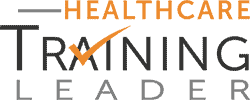You can’t just choose a modifier that fits—you must choose the one that fits the best, or you’ll lose out on both reimbursement and the extra time it takes you to rework the claim. The problem is that the subtle differences between modifiers makes it extra tricky to keep their definitions straight and apply them correctly.
This is where coding training expert, Kim Huey, MJ, CHC, CPC, CCS-P, PCS, CPCO, can help. During her 60-minute online training, Kim will clear up all your E/M modifier misconceptions so you can finally get paid for more of the office services you provide.
This training will help you master E/M modifiers like 24, 25, and 57, and sidestep the most common modifier mistakes that reduce your reimbursement, result in a full denial, or worse, get you audited.
Here is just a sampling of the E/M modifier application strategies you’ll learn by attending this expert-led 60-minute online training:
- Prevent denials by using this simple trick to keep modifiers 24 and 25 straight
- Apply modifier 24 correctly every time by mastering global period nuances
- Shun payer scrutiny by knowing which modifiers to never use together
- What terms like “separately identifiable” really mean, and how to apply them
- Increase payments by accurately prioritizing your modifiers on your claims
- Document modifiers usage to overcome payer questions before they are even asked
- Safely bypass billing edits so you’ll never be at risk for payer recoupments
- Foolproof ways to determine above and beyond services and choose the right modifier
- Easy-to-answer yes/no flow chart tool to quickly identify when modifier 25 is viable
- Improve payup for post-op E/M services, even if your payer follows CPT rules (not Medicare rules)
- Determine whether or not an E/M service is “unrelated,” once and for all
- And so much more!
Regardless of your practice’s size or specialty, if you see patients in your office and bill for E/M services, this online training is a must-attend. Misusing E/M modifiers—even accidentally—is a costly mistake. Not only could you be denied payment in the first place, but unusual use of modifiers is a definite audit trigger. And once auditors are in your records, they can dig around for years, exposing you to thousands of dollars in violation fines.
Knowing when—and when not—to use E/M modifiers will maximize your reimbursement, smooth your claims process by preventing denials, and shield your practice against audits and penalties. This training will walk you through how to identify modifier red flags, audit-proof your modifier justification documentation, and pin down the nuances between each of the E/M modifiers to help you choose the BEST one every single time.
Don’t wait. Sign up for this online session today and ensure that you’re getting reimbursed for every allowable service you provide under the new 2021 E/M coding rules.
E/M modifier.
Kim is an independent coding and reimbursement consultant, providing audit, training and oversight of coding and reimbursement functions for physicians. Kim completed three years of pre-medical education at the University of Alabama before she decided that she preferred the business side of medicine.
She completed a Bachelor’s degree in Health Care Management and went on to obtain certification through the American Academy of Professional Coders and the American Health Information Management Association.
Recognizing the important position of compliance in today’s world, she has also obtained certification as a Certified Healthcare Compliance Consultant and a Certified Healthcare Audit Professional. Kim is also an AHIMA-approved ICD-10-CM trainer and has recently earned a Master of Jurisprudence in Health Law.
For over twenty-five years, Kim has worked with providers in virtually all specialties, from General Surgery to Obstetrics/Gynecology to Oncology to Internal Medicine and beyond. She has spoken at the national conference for numerous organizations.
